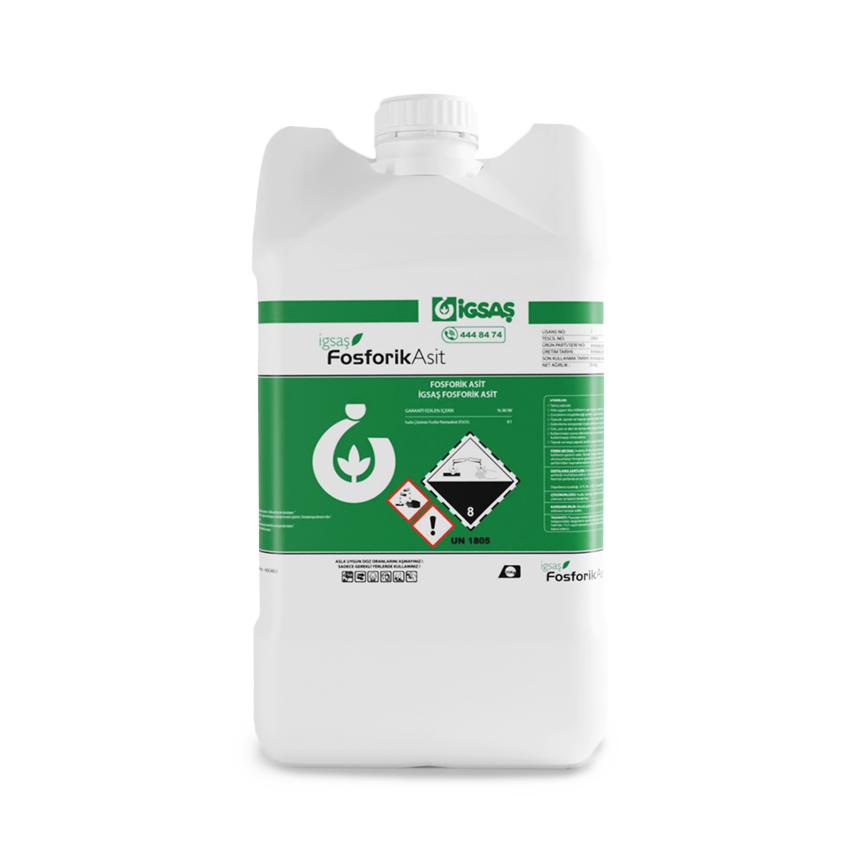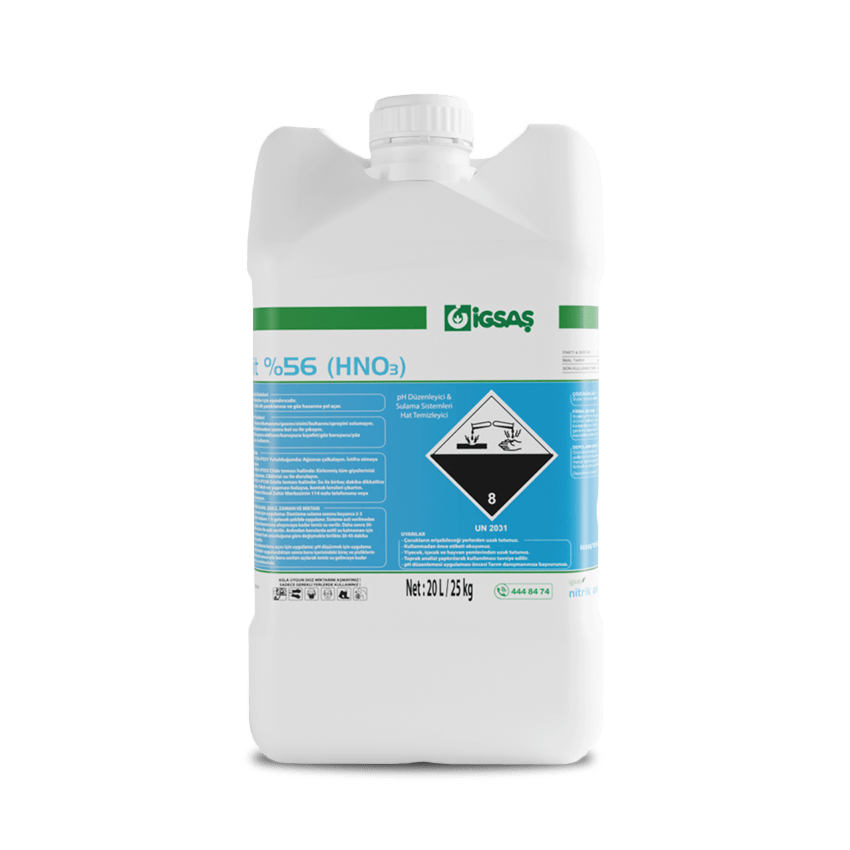
IGSAS PHOSPHORIC ACID
Phosphoric AcidIt can be obtained by treating phosphate rock with sulfuric acid, or by combining diphosphorus pentaoxide (P2O5), which is obtained by roasting phosphate rock in ovens, with water. It contains varying degrees of phosphorus (P2O5), over 50%, depending on its manufacture and dilution. It is liquid and heavier than water. It is used in irrigation systems at the beginning of the development period both as a source of phosphorus and to clear blockages in irrigation systems. Phosphoric acid is a strong acid containing 61% phosphorus (P2O5). When applied to the soil through irrigation systems, it lowers the pH on the contact surfaces, albeit slightly. It is marketed in plastic drums of various sizes.
Category: Acid Series
